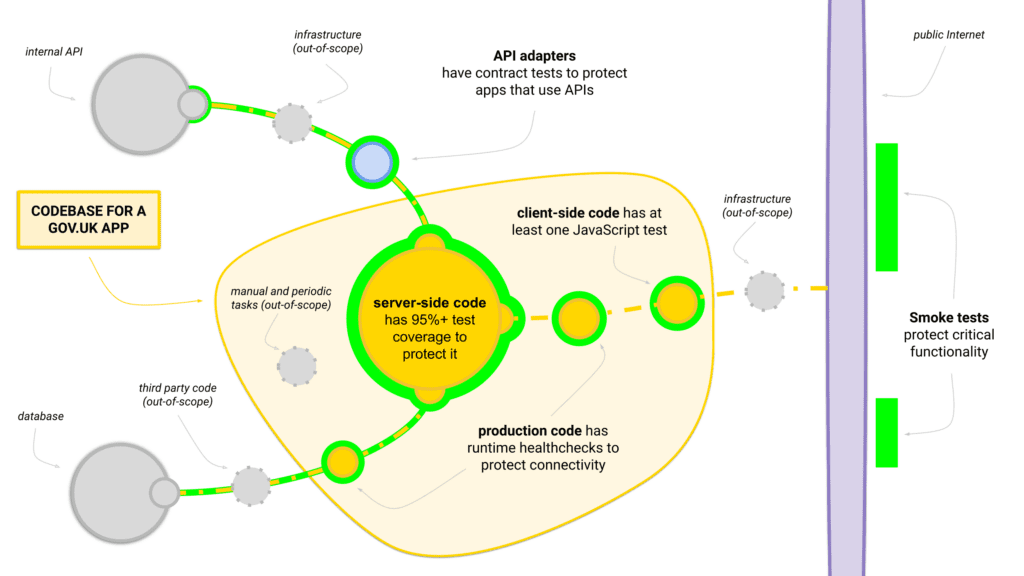A new standard of testing for GOV.UK

How we consolidated the testing landscape for GOV.UK into a small number of practical rules that are bringing a new consistency to the way we test our code.

How we consolidated the testing landscape for GOV.UK into a small number of practical rules that are bringing a new consistency to the way we test our code.

How we reduced toil when managing infrastructure for 50 applications.

Adding a ‘show password’ option to GOV.UK accounts looked like a straightforward task, but it was more interesting and complicated than we expected.

GDS are recruiting for someone to lead on creation of the next generation of GOV.UK’s technical architecture, and to head up the community of technologists who will build this future. Find out more information about the role and how to apply.

Help the government build better services by joining the cross-government community to share knowledge and resources.

We’ve enabled HTTP/2 on GOV.UK to help improve the site’s performance. Here we look at what HTTP/2 is, how it improves performance, and the impact it has had on our users.

GDS’s internal IT infrastructure was built to support flexible working, so here’s how we were able to adapt to a completely remote workforce.

We’ve switched to using Docker ‘containers’ for our local development environment, which has made it simpler to use and less error-prone.

Whether you’re searching for micropigs or income tax, we've upgraded the Elasticsearch database that powers GOV.UK search to make it easier to find information.

The .gov.uk domain name application guidance is the first piece of government technology content to use the new step-by-step pattern. Here’s how we made it happen and the benefits of displaying the content in this way for users.